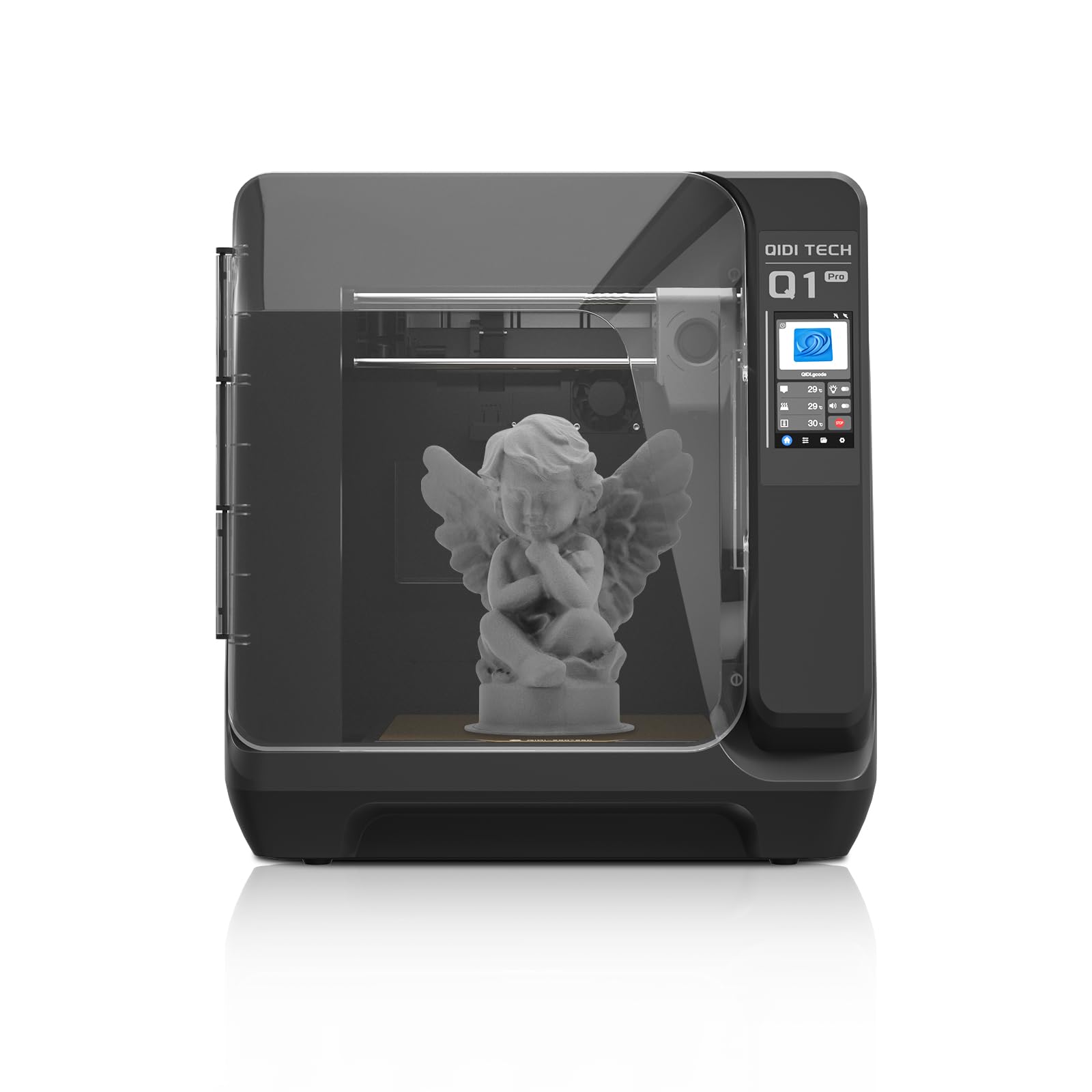Compare Q1 PRO vs H2D
Comparison between the best 3D printers
Choose the best 3D printer at the best price. The cheapest 3D printers are here.
Buy a 3D printer here with 3D Fila.
 |
 |
|
| Model | Q1 PRO[BUY Q1 PRO] |
H2D |
| Printing Material | Filament | Filament |
| Buy Filament for QIDI Q1 PRO | Buy Filament forBambu Lab H2D | |
| Estimated price | $449,00 | $1899,00 |
| Manufacturer | QIDI | Bambu Lab |
| Release Year | 2024 | 2025 |
| Print Volume [mm] | 245x245x245 | 350x320x325 |
| Printer Size [mm] | 467x477x489 | 492x514x626 |
| Weight [kg] | 20 | 42,3 |
| Power Loss Recovery | YES | YES |
| Enclosed printer | YES | YES |
| Bed Leveling | Automatic | Automatic |
| Filament End Sensor | YES | YES |
| Bed type | Heated | Heated |
| Power supply system | Direct Drive | Direct Drive |
| Standard nozzle | 0,4 | 0,4 |
| Maximum Nozzle Temperature [°C] | 350 | 350 |
| Maximum Bed Temperature [°C] | 120 | 120 |
| Maximum printing speed [mm/s] | 600 | 600 |
| Filament holder | YES | YES |
| Camera for supervision | YES | YES |
| Recommended filaments | PLA、ABS、ASA、PETG、TPU、PC、PA、PA-CF、PET-CF、PAHT-CF etc. | PLA, PETG, ABS, ASA, TPU, PVA, Nylon (PA) |
| Recommended slicers | QIDI Slicer/Cura/Simplify 3D/ORCA/PRUSA Slicer | Bambu Studio |
| Maximum Resolution [mm] | 0,1 | 0,01 |
| Processor | Cortex-A53,64-bit Processor | |
| Display | Touchscreen 4,3'' | Touchscreen 5'' |
| Power Supply | 350 W | |
| Connectivity | WiFi/USB Flash Drive/Ethernet Cable | Wifi, Bambu bus, Cartão SD |
| Operating systems | Windows, Linux, Macbook | Windows, Mac, Linux |
| Date of registration in the system | 2024-07-09 | 2025-03-31 |
| Release date | 2024 | 2025 |
| Extra features | The QIDI Q1 Pro 3D printer stands out for its Core XY structure and heating chambers that reach up to 60ºC, ideal for advanced materials such as ABS and Nylon. It features Klipper firmware, an automatic leveling system, a high-flow extruder with a double metal nozzle and a hotend that reaches 350ºC. It offers connectivity via Wi-Fi, USB and Ethernet, as well as a 1080p camera for remote monitoring and an intuitive touchscreen for easy operation. | Bambu Labs H2D combines high-speed 3D printing with a chamber heated up to 65 °C, dual extrusion with automatic nozzle switching, an AMS for filament drying and exchange, and AI sensors that detect failures. It offers optional laser and digital cutting capabilities, features intelligent calibration through computer vision, vibration control, enhanced fire safety, and real-time camera monitoring. |
| Support for multiple colors and materials (AMS and CFS) | NO | YES |
Notes * |
||
| Cost-benefit | 8 / 10 | 7 / 10 |
| Hardware | 4.8 / 10 | 7.2 / 10 |
| Tela | . | . |
| Print volume | 3 / 10 | 4 / 10 |
| Performance | 5 / 10 | 5 / 10 |
| [BUY Q1 PRO] |
Conclusion |
| In comparing the QIDI Q1 Pro and the Bambu Lab H2D, several key factors emerge that cater to different user needs and priorities. The QIDI Q1 Pro offers an excellent cost-benefit ratio, positioning itself as a more accessible option for those who are entering the world of 3D printing or have more modest requirements. Its features—like a heated chamber and the ability to handle various filament types—make it versatile for standard applications, while its compact print volume can accommodate most common projects. The additional functionalities such as Wi-Fi connectivity and a user-friendly touchscreen further enhance its appeal. On the other hand, the Bambu Lab H2D is a more advanced and feature-rich option aimed at professionals or enthusiasts who are looking for high-performance capabilities. Its larger print volume and advanced dual extrusion system enable more complex projects, allowing for multiple colors and materials—a significant advantage for detailed or multi-part prints. The added features, including intelligent calibration and AI sensors for failure detection, elevate its utility in a production or high-demand environment. While the QIDI Q1 Pro delivers excellent value for the price and is well-suited for general use, the Bambu Lab H2D justifies its higher price tag with superior hardware and advanced functionalities aimed at maximizing productivity and print quality. Ultimately, the decision between these two models comes down to the user’s budget and specific needs: those focused on general printing and cost-effectiveness may lean towards the QIDI Q1 Pro, whereas those desiring cutting-edge technology and capabilities might find the investment in the Bambu Lab H2D worthwhile. |

